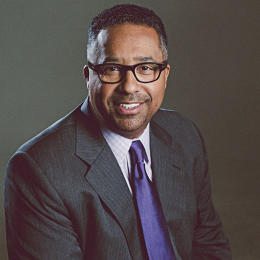#Leadership : A Simple but Ruthless Exercise Reveals who your #StarEmployees Are & Who Should be #Fired … A #Strategy you Might Call the “Six-Month Exercise”. You Should Do it Regularly & Here’s How it Works
- Patty McCord is the former chief talent officer at Netflix. She now runs her own consulting business.
- In her new book, “Powerful,” McCord says managers should always consider whether the team they have now is the team they’ll need in six months.
- If not, they should let go of the employees who don’t have the requisite skills and knowledge.
Being a manager requires practicality bordering on ruthlessness — at least according to Patty McCord.
McCord was the chief talent officer at Netflix from 1998 to 2012; she and Netflix’s CEO Reed Hastings created the company’s infamous culture deck. Now she runs her own consulting business.
McCord has just published a book titled “Powerful: Building a Culture of Freedom and Responsibility,” in which she distills the lessons she learned at Netflix and as a consultant into insights any manager can use.
One of the most jarring insights is that the team you have now may not be the team you’ll need going forward. And since a manager’s goal is to build the best team possible, you may have to make some tough decisions about which employees to keep on — and which to let go.
Like this Article ? Share It ! You now can easily enjoy/follow/share Today our Award Winning Articles/Blogs with Now Over 2.5 Million Growing Participates Worldwide in our various Social Media formats below:
FSC LinkedIn Network: www.linkedin.com/in/fscnetwork
Facebook: http://www.facebook.com/pages/First-Sun-Consulting-LLC-Outplacement-Services/213542315355343?sk=wall
Google+: https://plus.google.com/115673713231115398101/posts?hl=en
Twitter: Follow us @ firstsunllc
Question: Want the ‘the best/current articles/blogs on the web’ on Job Search, Resume, Advancing/Changing your Career, or simply Managing People?
Answer: Simply go to our FSC Career Blog below & type(#career, #leadership, #life) in Blog Search: https://www.firstsun.com/fsc-career-blog/
What Skill Sets do You have to be ‘Sharpened’ ?
Continue of article:
To that end, McCord recommends a strategy you might call the “six-month exercise.” You should do it regularly, she writes. Here’s how it works:
1. “Write down what the team will be accomplishing six months from now that it’s not accomplishing now.” It could be a product they’re building, or money they’re making.
2. “Think about how things are being done differently from the way they are currently done.” Imagine yourself walking around the office — maybe there’s more collaboration, or fewer meetings.
3. Think: “In order for those things to be happening, what would people need to know how to do?” It could be technical knowledge, or negotiating skill.
Now here comes the hard part. Does your current team have the right skills, knowledge, and experience? If not, you may need to bring in people who do, potentially even replacing some of your current team members.
In an interview with Business Insider, McCord said that companies’ missions should be “hiring the best people to solve the problems that you need to solve in your particular company — and then making sure that those teams are always comprised of those kinds of people.” But — and here’s the kicker — “it’s not always the same people.”
Netflix is clear that it only keeps its most effective employees
Netflix doesn’t appear to have changed its management practices very much since McCord left. In the “culture” section on its website, Netflix makes clear that they “keep only our highly effective people.” The website reads: “Succeeding on a dream team is about being effective, not about working hard. Sustained ‘B’ performance, despite an ‘A’ for effort, gets a respectful generous severance package.”
It’s worth noting here that McCord was let go in 2013. “I am the ultimate product of the culture that I helped create,” she told Business Insider, noting that she’s had a successful career since leaving Netflix and is still in touch with many of her former colleagues.
This isn’t an easy way to manage people — in fact it might seem downright unfair. McCord’s argument in the book is that “you’re building a team, not raising a family.” That is to say, you’re not responsible for your employees’ career development.
McCord told Business Insider that employees should steel themselves against this reality. “You should be wary of expecting a company to take care of your career for you, because that’s not their job. Their job is to take care of their customers and their clients.”
Businessinsider.com | January 18, 2018 | Shana Lebowitz
[/fusion_builder_column][/fusion_builder_row][/fusion_builder_container]













